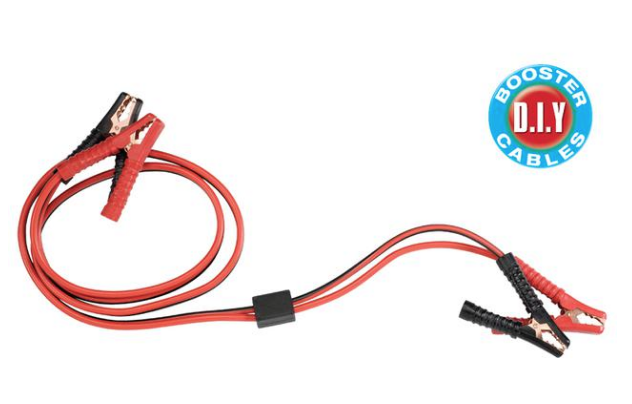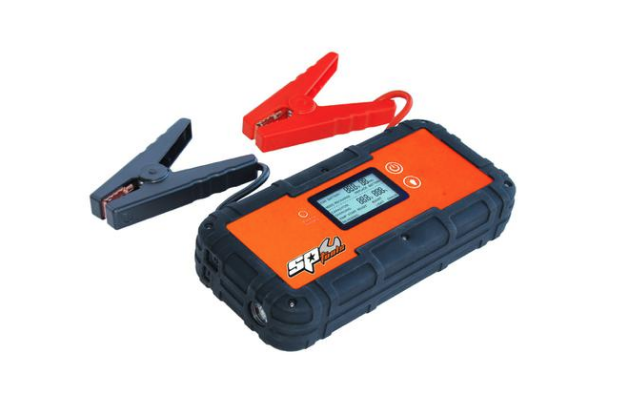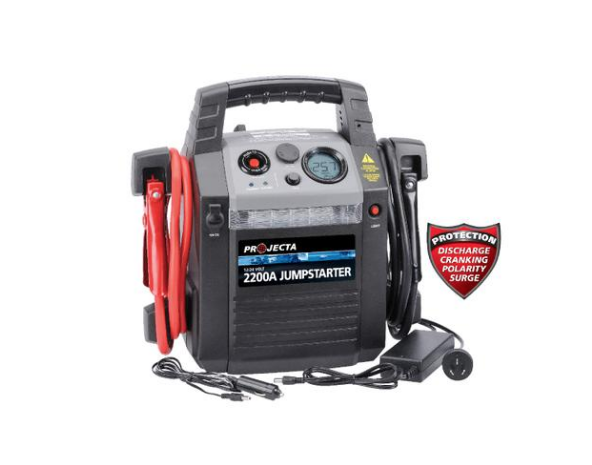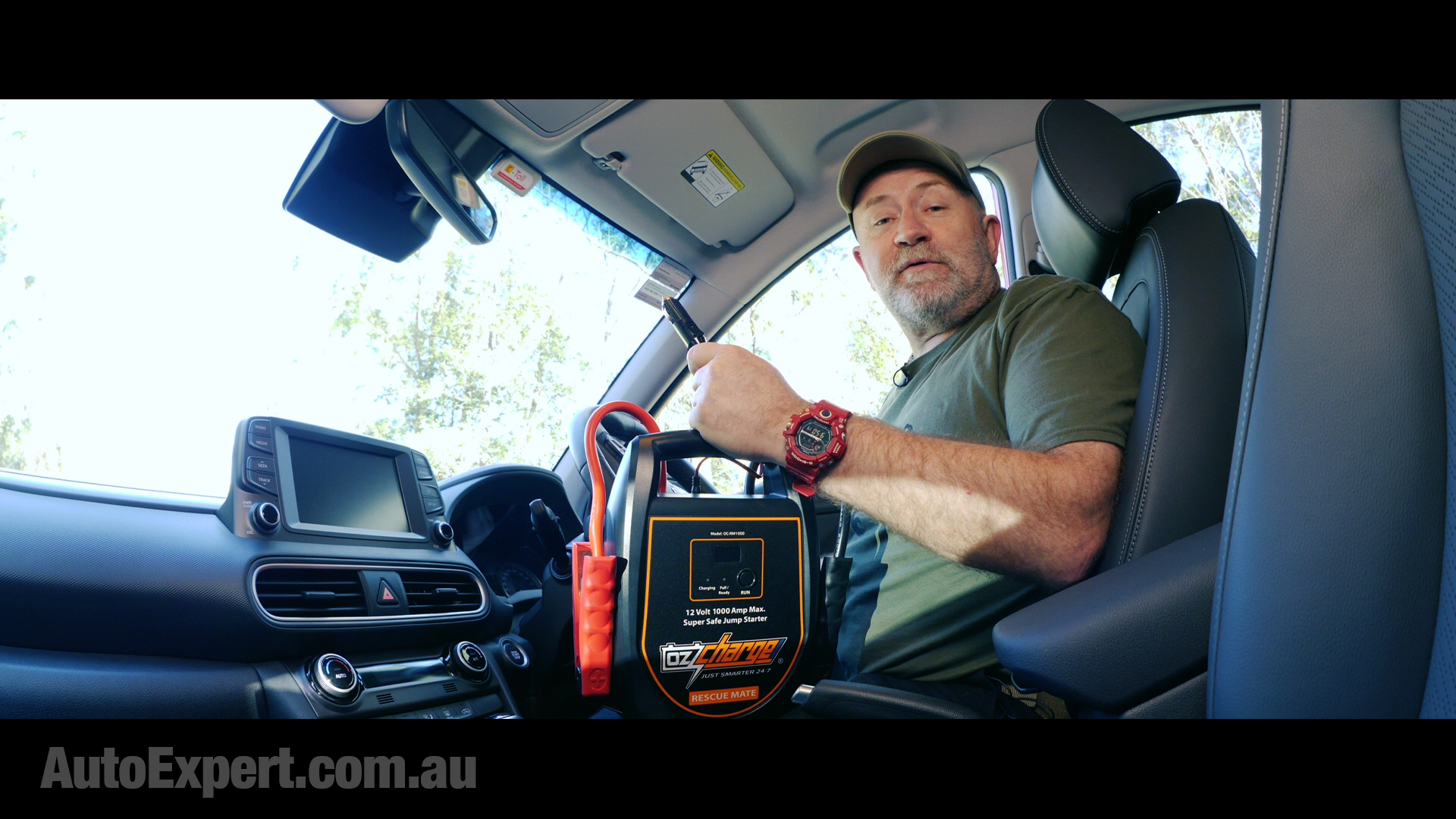How to jump start a car (best way ever)
Wouldn’t it be impossibly excellent if you could jump start your car using the latent energy trapped in a notionally ‘flat’ battery, or even a USB power bank for your phone? Let’s do that.
One of the most frustrating things about having a flat battery is: there’s typically plenty of energy to do the job left in the notionally ‘flat’ battery - the battery has merely lost the capacity to deliver that energy fast enough to crank the engine.
And it’s frustrating for carmakers, too - all that expensive R&D to iron out those complex interactions, and yet, two of the least reliable aspects of the modern car continue to be two components carmakers don’t actually make - the tyres and the battery.
And, here in 'Straya - it’s potentially pretty easy to be in the middle of nowhere when this kind of thing lets you down. That’s generally not fun.
Check out some conventional jump start products >>
How much power does it take to start your car?
People say it takes 250 amps to crank the car over. Maybe a bit more. What they really mean is 250 amps at 12 volts. (Volts x amps = Watts.)
(Named after James Watt, Scottish genius engineer. The steam engine dude. Worked out quite well. 1736. Look it up on Wikipedia >>)
So, 250 amps x 12 volts = 3000 Watts. That's three kilowatts to crank the engine. Maybe more. Maybe five or six - it depends on a range of factors, like the compression and the number of cylinders.
Physics in the Fat Cave: Energy versus power
A punching bag hanging off a steel beam is a system in equilibrium. Gravity pulls it down; the chain holds it up. It’s not going anywhere.
If you pump a packet of energy into it, you’ll displace it a certain amount - and then it’ll swing and carry one and dissipate that energy, eventually returning to rest thanks to friction in all the bits.
You can put the energy in slow, with a gentle push, but if Iron Mike is advancing on you with a certain vengeful gleam in his eye (he’s hungry for ‘ear’) it’s probably better if you can deliver that energy faster.
The difference between a punch and a push is the power - the energy is about the same.
Power is how fast you deliver the energy. It’s literally the time rate of change of energy in a system.
How does this help jump start your car?
The basic problem with a flat battery is this - there is heaps of energy is left in the battery. You can confirm this because the lights still work, you can recharge your phone. It’ll run the radio for hours. You can even hear the solenoid engaging the starter on the ring gear - if you attempt a start.
Very frustrating.
But the battery can’t deliver the power you need to crank the starter against the internal friction and compression of the engine.
Would it not therefore be excellent if you had a device capable of trickling the energy in over several seconds to several minutes, and then punching it back out in a starter-friendly high power discharge?
Rescue Mate 1000
This is the OzCharge Rescue Mate 1000 >> - big brother of the Rescue Mate 500. It’s not a battery - it’s full of capacitors and mad electronic voodoo. And this allows it to suck up energy slowly and punch out power fast.
Four steps to jump start
So, I thought: ‘How sick can a car battery actually get, before it’s totally useless in this context?’
How about if the voltage drops from 12 to five, and the cold cranking current drops from (say) 300 amps to just two? That’s a pretty sick battery. Kinda like the kind of USB power bank you'd recharge your phone with - five volts at 2.1 amps. That's roughly a near-death car battery. There’s no way you’re going to crank a car over with a USB power bank, right?
Starting a car using a 'Mr Puniverse' USB battery
A 12-volt car battery might have to deliver three kilowatts - that’s 3000 Joules of energy per second of cranking. The USB battery we're testing here is 6.6 amp-hours at five volts. (Equals 33 Watt-hours of energy. Which is about 24 kilojoules.) That's actually enough to crank a car for about eight seconds (of 12 volts at 250 amps). If you could release it fast enough.
Which you generally can’t, problematically.
Unless, of course, something goes horribly wrong.
'Horribly wrong’ scenarios are exactly why airlines are twitchy as hell about having umpteen lithium-ion batteries in the hold. There’s a shitload of energy locked in them. So if there’s a malfunction, and it all escapes fast it could get quite ugly. Almost all of those batteries are built down to a price, in China.
And there you are, in an aluminium pipe flying at 0.8 mach, six miles above the ground, bitching about the shitty food and the snide service while you should be riffing air guitar because you’re alive in the 21st Century. (#ScienceRocks.)
Unfortunately, for jump starts, this battery is kinda the Mr Puniverse of power delivery - 10.5 watts. That’s about one-250th of the power we need to crank the car.
So I guess the options are: get three or four hundred USB battery banks, and a soldering iron, and go 100 per cent McGyver. Or just get … one a Rescue Mate.
The test
Let’s see how long it takes 'Mr Puniverse' to amp up the Rescue Mate.
Ultimately, on the bench in the Fat Cave, using the anorexic USB power bank we were good to go in about 17 minutes. Compared to spending the night in the scrub - a reasonable investment in time.
Using the Rescue Mate in the field
It’s dead easy to use. The unit says ‘ready’ when it’s … ahhh ... ready. And once it’s ready it’ll hold the charge for a few days.
Good safety tip - shut down all the other electrical ancillaries, like the lights, radio and the HVAC, before jump starting. You want as much power as possible going into the starting process, right?
And then just wait for the ‘run’ mode to time out before disconnecting the unit - that’s more for your own safety than anything else. Because devices with accrued electrical energy deserve respect.
Not Sponsored
So - full disclosure. OzCharge contacted me. Said: please review our cool product. I said: OK. But they’re not paying me to talk them up. I don't do that.
I kinda like it when organisations are confident enough about their product to roll the dice in exactly this way.
(Because I do have this worrying tendency to say what I really think. You might have noticed.)
I’m very keen on bullshit filtration. At least then you know what I actually think, right?
.
Rescue Mate versus battery jump starter
The Rescue Mate is a lot better than a battery-type jump starter. It's that simple.
Battery packs go flat.
And most people are not disciplined enough to charge up every two to three months.
Balance of probabilities: you’ll forget to charge yours. It’ll be flat exactly when you need it. Just like a flat spare tyre, only electrical, and just as useful.
Out of sight; out of mind, right?
The big advantage with the Rescue Mate is: You don’t have to carry the it around charged up. Just pump it up when you need it.
It can be charged in a few seconds off the 'flat' battery itself, via the big alligator clips. You just clamp them on, it sucks energy out of your flat battery, then it hands it back, only a lot faster.
(More powerfully, as discussed.)
Or you can charge it in a few minutes off the 12-volt cigarette lighter-style power outlet in a vehicle.
Or you can charge it by by USB, as demonstrated in the bench test in the Fat Cave. Both those cables are supplied.
The Rescue Mate is electronically protected against imbeciles. It won’t work if you get the polarity wrong.
(Red goes with red - how hard is it?)
Virtually idiot-proof...
...virtually.
Alternative jump start products
Click the images below for more detail.
For professional use
If you’re in the trade, with people darkening your door with flat batteries frequently, the Rescue Mate another thing you don’t have to remember to charge. Just walk out, charge it up off the customer’s notionally dead battery, get them running. Look like a hero. You know you want to…
But there’s a serious side to this: Commercially it’s an opportunity. You might sell a battery or a reco-ed alternator. But you might grab a regular customer for years. Because you solved their problem quickly and efficiently.
And if you’re just a 'civilian' - stick one in the boot. It’s a no-brainer, weighed up against the inconvenience of being stranded somewhere remote, just once.
It's a premium product at a premium price - there are cheaper alternatives, certainly.
If your battery is really dead
Of course, there might be the odd scenario where your battery is properly dead. If your battery is as dead as Donald Trump from the neck up, just plug the Rescue Mate into someone else’s 12-volt power outlet - for a couple of minutes. That’s all it takes.
People are rightfully twitchy about offering you a jump start. They don’t want to blow up their car’s computer. I get that. Plugging in the Rescue Mate is, however, is a lot easier for a good samaritan to agree to.
Conclusion
According to the manufacturer, the RescueMate’s design life is 10 years plus - which is longer than an equivalent battery pack. It’s also lighter.
Minimum voltage to charge it up is three volts, and the maximum input is 15.5, which is essentially a pretty wide range of trickle-charging options.
The rescue Mate is dead easy to use, as well as being a real step up from battery-based jump start packs. The price is not cheap, but you'll be glad you spent the big bucks if it saves you just once.
And if you can find a hot cheerleader with a flat battery, a Rescue Mate could work even better than having a puppy. And having a puppy normally works quite well...
Okay, it’s not a benzodiazepine martini, but it's close.
Rescue-mate.com >> for more info. It’s a good product.





































The Mitsubishi Outlander is an excellent-value seven-seat family vehicle with plenty of features and capability. It looks modern and tough, but you need to know if it’s going to be good enough compared with other medium SUVs.